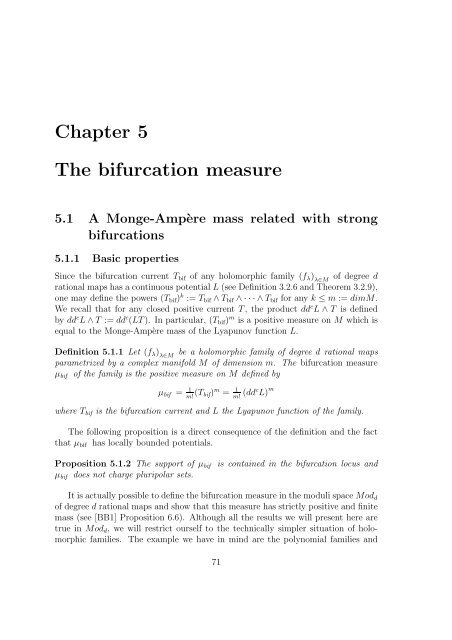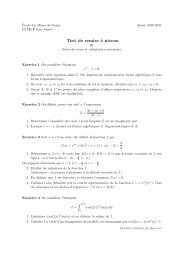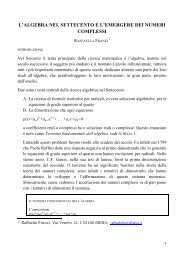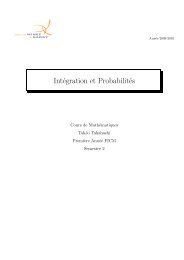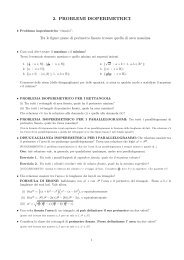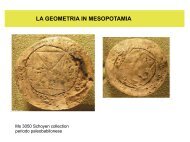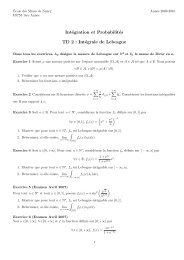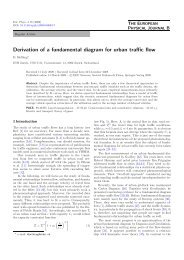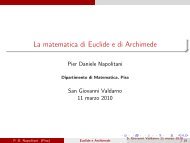Bifurcation currents in one-dimensional holomorphic dynamics
Bifurcation currents in one-dimensional holomorphic dynamics
Bifurcation currents in one-dimensional holomorphic dynamics
- No tags were found...
Create successful ePaper yourself
Turn your PDF publications into a flip-book with our unique Google optimized e-Paper software.
Chapter 5The bifurcation measure5.1 A Monge-Ampère mass related with strongbifurcations5.1.1 Basic propertiesS<strong>in</strong>ce the bifurcation current T bif of any <strong>holomorphic</strong> family (f λ ) λ∈Mof degree drational maps has a cont<strong>in</strong>uous potential L (see Def<strong>in</strong>ition 3.2.6 and Theorem 3.2.9),<strong>one</strong> may def<strong>in</strong>e the powers (T bif ) k := T bif ∧ T bif ∧ · · · ∧ T bif for any k ≤ m := dimM.We recall that for any closed positive current T , the product dd c L ∧ T is def<strong>in</strong>edby dd c L ∧ T := dd c (LT ). In particular, (T bif ) m is a positive measure on M which isequal to the Monge-Ampère mass of the Lyapunov function L.Def<strong>in</strong>ition 5.1.1 Let (f λ ) λ∈Mbe a <strong>holomorphic</strong> family of degree d rational mapsparametrized by a complex manifold M of dimension m. The bifurcation measureµ bif of the family is the positive measure on M def<strong>in</strong>ed byµ bif = 1 m! (T bif) m = 1 m! (ddc L) mwhere T bif is the bifurcation current and L the Lyapunov function of the family.The follow<strong>in</strong>g proposition is a direct consequence of the def<strong>in</strong>ition and the factthat µ bif has locally bounded potentials.Proposition 5.1.2 The support of µ bifµ bif does not charge pluripolar sets.is conta<strong>in</strong>ed <strong>in</strong> the bifurcation locus andIt is actually possible to def<strong>in</strong>e the bifurcation measure <strong>in</strong> the moduli space Mod dof degree d rational maps and show that this measure has strictly positive and f<strong>in</strong>itemass (see [BB1] Proposition 6.6). Although all the results we will present here aretrue <strong>in</strong> Mod d , we will restrict ourself to the technically simpler situation of <strong>holomorphic</strong>families. The example we have <strong>in</strong> m<strong>in</strong>d are the polynomial families and71


